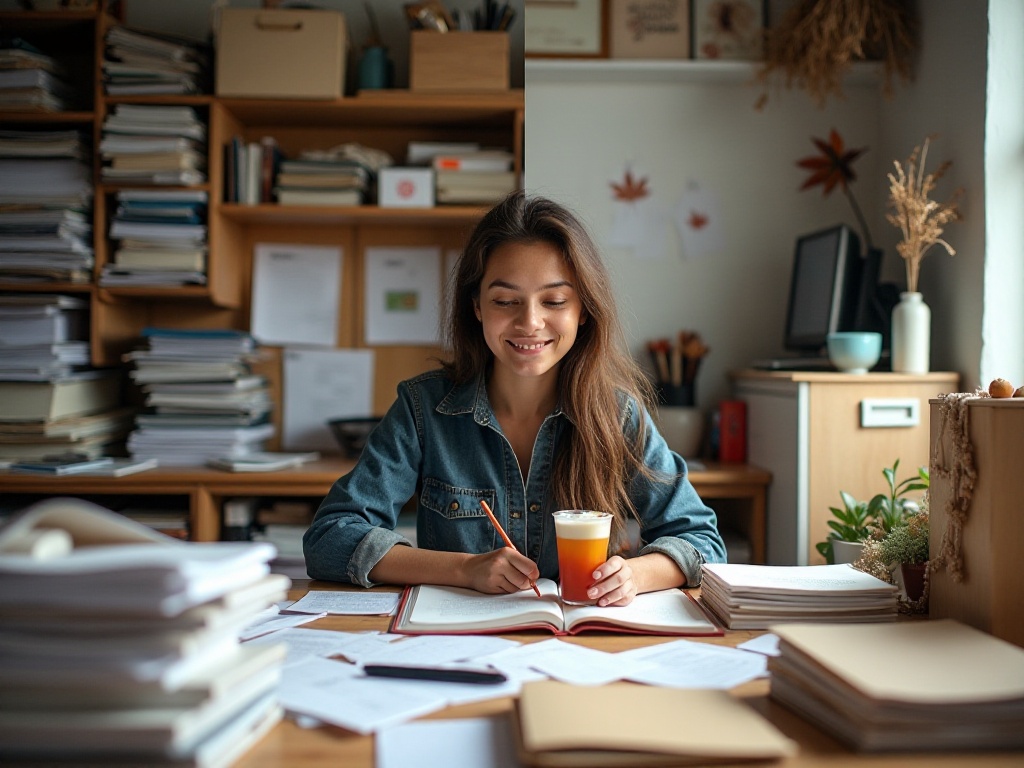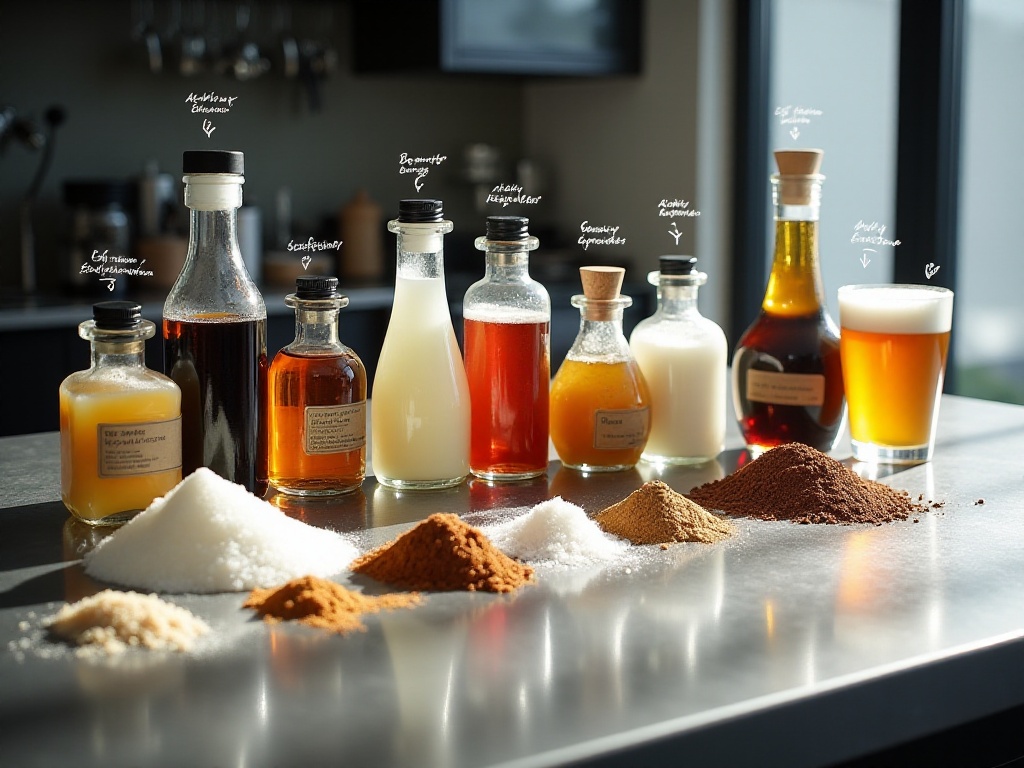
DIY Irrigation System
Have you ever thought that plastic bottles aren't just waste, but have many clever uses? For instance, we can use them to make a super simple irrigation system to help you easily manage your plants. This method is not only eco-friendly but also particularly effortless.
I remember once visiting the countryside and seeing an elderly lady watering her garden with plastic bottles, and it worked amazingly well. Her method was like this: first, find a clean plastic bottle, cut off the bottom, and make several small holes in the cap. Then, insert the bottle neck into the soil, ensuring good contact between the bottle and soil. Finally, fill it with water, and the water will slowly seep into the soil, ensuring water supply for the plants. Isn't that amazing?
This method utilizes capillary action, just like using a straw to drink, where water automatically moves upward, keeping the soil moist. Especially in hot summer, you can leave without worrying about your plants dying of thirst. I find this technique very useful, applicable to balcony gardening, yard landscaping, and even office plants.
In fact, this little trick isn't just convenient for plant management; it has deeper benefits. First, it greatly reduces water waste since water seeps into the soil slowly according to the plant's needs, rather than excessive one-time watering that leads to water loss. Second, this method prevents soil from becoming overly dry, reducing the risk of plant wilting due to water shortage. Especially in hot summer when plants need more water, this irrigation system ensures your plants get sufficient nourishment even when you're traveling.
Moreover, this method has an additional benefit: it helps control soil moisture. Overly wet soil can cause root rot, but this simple system can effectively control water supply and prevent overwatering. Imagine applying this simple irrigation system to various potted plants, from small cacti to large-leaved plants - they can all benefit greatly.
This trick can be expanded to larger scales, such as community gardens or school botanical gardens. Using this DIY irrigation system not only saves time and effort but also encourages more people to participate in environmental protection. People can collect discarded plastic bottles together and DIY these devices, making it both environmentally friendly and meaningful.
Overall, this method isn't just a personal convenience but also an eco-friendly lifestyle attitude. It shows us that every small household item, if we explore thoughtfully, can find new uses, reducing resource waste and protecting our environment.

Shoe Deodorizing
After discussing the clever uses of plastic bottles, let's talk about how to keep your shoes from smelling bad. Trust me, this problem bothers many people, especially in summer.
I have a friend who loves exercising, and his shoes become "smell bombs" after every workout. Later, I taught him a trick: putting tea bags or activated charcoal in the shoes. The tea's fragrance can neutralize odors, while activated charcoal acts like a small vacuum cleaner, absorbing all odor molecules.
Here's how to do it: First, put tea bags or activated charcoal in the shoes, then place them in a well-ventilated area overnight. The next day, you'll find the smell in the shoes has greatly improved. Tea bags and activated charcoal are easy to buy, inexpensive, and importantly, eco-friendly and effective.
Moreover, this isn't just about eliminating odors. Tea and activated charcoal can also absorb moisture in shoes, preventing bacterial growth. Think about it - if you can keep your shoes dry and odorless, not only will they be comfortable to wear, but you'll also avoid embarrassing "odor social situations."
The beauty of this method lies in its simplicity and efficiency. First, tea and activated charcoal are natural substances that won't harm the human body. Second, they have strong absorption capabilities, effectively absorbing sweat and odors produced inside shoes. Activated charcoal, in particular, can absorb large amounts of odor molecules due to its porous structure, keeping shoes fresh.
Besides tea bags and activated charcoal, you can try other natural materials like bamboo charcoal, silica gel packets, or even old newspapers. These materials can all absorb moisture and odors to some degree. Bamboo charcoal is especially recommended because it not only absorbs odors but also releases negative ions beneficial to human health.
Plus, this method has an additional advantage: it's reusable. Tea bags can be dried and reused after use; activated charcoal can be sun-dried to restore its absorption capacity. These tips not only save money but also reduce waste, aligning with environmental protection principles.
After using this deodorizing method, you'll find that not only do your shoes stop smelling, but their lifespan also increases. Since moisture and bacteria are important factors in shoe deterioration, reducing these factors naturally helps shoes last longer.
Finally, this method has a social benefit: avoiding social embarrassment caused by shoe odors. Especially for those who frequently wear athletic shoes, this trick can make you more confident in social situations, without worrying about your shoes making others uncomfortable.

Removing Oil Stains from Clothes
Speaking of life's little annoyances, oil stains are definitely one of them. Especially when you accidentally get oil on your favorite clothes, it feels like a bolt from the blue.
Don't worry, I have a super useful trick: using baby powder to treat oil stains. Sounds unbelievable? But it really works well.
First, evenly sprinkle baby powder on the oil stain, ensuring it covers the entire stained area. Then, let it sit overnight, and the powder will slowly absorb the oil. The next day, gently brush off the powder with a toothbrush and wash as normal. You'll find that the oil stain has been absorbed, and most won't leave any traces.
I've used this method several times to treat oil stains, from kitchen oil to restaurant stains, all with good results. Baby powder has strong absorption properties; it works like a miniature "oil stain vacuum cleaner," pulling oil out of the fibers. Remember to choose unscented baby powder to avoid affecting the clothing's color.
The brilliance of this method lies in its use of physical absorption principles. The fine particles of baby powder can penetrate into clothing fibers' gaps, absorbing those hard-to-remove oils. After sitting overnight, the oil stains are mostly absorbed, and with a gentle brush during washing, most oil stains will disappear.
Besides baby powder, you can try other household items. For example, many people might use flour or cornstarch, which also have oil-absorbing capabilities. Flour is particularly common, inexpensive, and effective. Its fine particles can penetrate fibers, absorb oils, and reduce oil stain marks on clothes.
Using this method has an additional benefit: it protects clothes from harsh chemical cleaners. Traditional stain removers often contain strong chemical components that, while quickly removing stains, may damage clothes with long-term use. Natural materials like baby powder and flour are gentler and won't cause significant damage to clothing fibers.
Moreover, this method can be extended to other life scenarios. For instance, if you accidentally drop oil on your carpet at home, you can use the same method. Sprinkle baby powder, let it sit, then vacuum clean, and the carpet's oil stains will be greatly reduced.
Finally, this trick embodies environmental protection principles. Baby powder and flour are common household items, eliminating the need to purchase additional chemical cleaners, reducing plastic packaging and chemical use, making it both economical and environmentally friendly. Give it a try - you might discover more interesting uses!












